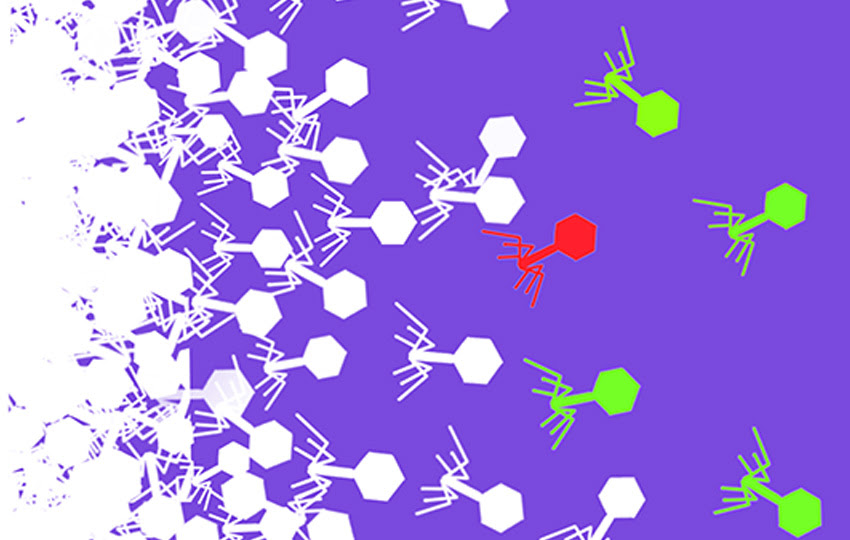Environmental Genomics and Systems Biology (EGSB) researchers have developed an effective method for mapping essential DNA across the entire bacteriophage genome and streamlining genetic labeling that could crack open a trove of untapped biological tooling.
Bacteria-infecting viruses, known as bacteriophages, or phages, are the most abundant biological entities on Earth, representing one of the largest pools of genetic diversity in nature. Understanding phage genetics and biology has the potential to unlock a wide range of useful biotech applications, including addressing antibiotic resistance, remediating contaminated environments, and developing new vaccines. But phage genomes have generally been poorly characterized, in part because available methods, to date, have been labor-intensive or failed to broadly apply to the wide diversity of phage types.
A research team led by staff scientist Vivek Mutalik has unveiled a new approach that stands to address these challenges, reported last month in PLOS Biology. They demonstrate for the first time that they can, on a genome-wide scale, identify phage genes that are essential (or not) to infecting bacteria, and then replace non-essential DNA with distinctive barcode tags. These barcodes could enable investigators and clinicians to quickly identify and track different phages in diverse settings, similar to how product barcodes are used in supermarkets.
To accomplish this, the team employed CRISPR interference (CRISPRi) technology to repress gene expression of almost every gene of two model phages. This knockdown of expression revealed which genes were important for each phage’s infection cycle, and which were dispensable. The researchers were then able to successfully engineer barcoded phages by inserting distinctive DNA tags into newly-identified inessential regions.
The report is the first studying gene essentiality at this scale in bacterial viruses. Moreover, the knowledge gained for one type of phage was applicable to others. Brought to scale, the method stands to unlock potent biotechnology applications relevant to agriculture, the environment, human health, and more.
Other EGSB contributors to this work include co-corresponding author Adam Arkin, senior faculty scientist, and two former researchers, Madeline L. Moore, research associate, and Luis A. Ramirez Hernandez, undergraduate research assistant.




